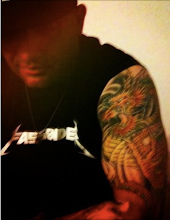While working on Nissan at TBWA Chiat/Day in Los Angeles, I came across a really interesting phenomenon.
During the launch of the '09 Nissan Z, we discovered that the owner to vehicle relationship was strikingly similar to those of Porsche, Mustang and Corvette.
Unlike most vehicles, these cars inspired multiple purchases of the same make and model - again and again, year after year. I met several people that owned a 4th Nissan Z, a 5th Mustang, a 3rd Corvette.
During the process of conducting an ethnographic study, I attended several owner groups and drives. I met with owners individually, some of their wives or husbands, went for drives in their cars, listened to their stories (Without a notebook. I looked at them when they spoke.) and asked loads of questions online, across dozens of blogs.
After becoming active on several Z owner sites, I began to feel a sort of quietness every time I returned to the Nissan built site. To be honest, it confused the shit out of me! The Nissan built site was beautiful, had gorgeous imagery and was very easy to navigate. All the right boxes were ticked!
I began to do these side by side comparisons with the other vehicle sites as well and noticed that a VERY different language was being used by owners when compared to manufacturers.
This directed my curiosity towards psychology, social science and philosophy journals to find if there were any studies conducted on people and the relationships they have with certain kinds of objects.
To my surprise I found an amazing book called "ich und du" translated from German to I and thou by Martin Buber in 1923.
In the book, Buber describes 2 relationships he named "I-it and I-you":
I-it describes an unemotional relationship, one where a person may treat another person as an object e.g. a surgeon NEEDS to maintain an i-it relationship with the patient he is about to cut into.
It is incredibly difficult for surgeons to operate on family members or loved ones for example. Unfortunately, once surgery is complete many surgeons have difficulty treating that patient with the emotion they removed from the relationship...often leading to the all too common complaint of "poor bedside manner".
The reverse can be seen with a human to object relationship e.g. asking to buy an object at a yard sale where your question is answered with a "Sorry, this teddy bear is NOT for sale, HE has sentimental value".
That person has ADDED emotion to an object. Essentially treating it as a living thing. Buber described how I-it and I-you relationships can both be identified via adjectives.
With this new insight in hand, we went back to the owner created web sites and were able to identify an I-you relationship, e.g. the cars were treated as if they were LIVING, BREATHING BEINGS. A he or a she.
When we reviewed the manufacturer web sites, EVERY SINGLE SITE had an I-it relationship with the vehicles, meaning they spoke about the vehicles they created, as if they were DEAD THINGS. An it.
The video below is a target audience brief that I decided to "bring to life" with the help of one of my favourite creatives, Ken Pappanduros. Much of the "living language" used by the passionate owners is quoted in the voice over, also done by the Papps! :)
We learned that this vehicle is not a mid-life crisis car, but rather a reminder that they are and have always been different than societies norm. A little braver, a little bolder.
Some explained how they enjoyed getting tattoos, because most only talked about it.
Some surfed, because most only talked about it. Some lived on the beach, because most only talked about it.
Consistently, they enjoyed DOING what others only talked about, and that included getting a powerful 2 seater sports car.
I believe agencies need to start treating focus groups as learning groups. Not building discussion guides, but actually having discussions...guide.
We need to learn from Hollywoods methodologies and understand how to become method actors. Learn how to look, walk and find the voice of our most passionate consumer, rather than the voice of a passionate salesman.
 Dan Ariely conducted a really interesting study at UC Berkeley a few years back where he attempted to understand how decisions were changed from a "cold state" (rational) to a "hot state" (emotional). One of the most powerful examples of Hot and Cold states is pregnancy.
Dan Ariely conducted a really interesting study at UC Berkeley a few years back where he attempted to understand how decisions were changed from a "cold state" (rational) to a "hot state" (emotional). One of the most powerful examples of Hot and Cold states is pregnancy. 